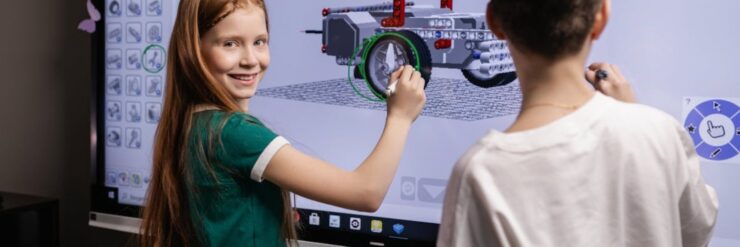As technology continues to revolutionize education, one of the most exciting trends emerging is gamified learning. This approach combines video game elements with education, allowing students to learn through interactive challenges and rewards, fostering an engaging learning environment.
What role will it play in the EdTech industry?
Also Read: What to Expect: Top EdTech Trends 2025
Discover how gamified learning is transforming the way students learn and how it will shape the future of EdTech businesses.
The future of education will focus on accessibility and affordability. Once these aspects are managed, the next step is about engagement. To retain and nurture students, EdTech businesses can utilize gamified learning.
What is Gamified Learning?
Gamified learning involves incorporating game elements—such as points, leaderboards, challenges, and rewards—into educational content and activities.
The idea is to make learning more engaging by tapping into the motivational (and fun) aspects of gaming, such as competition, progression, and accomplishment.
Instead of merely completing assignments or taking tests, students become players in an interactive educational experience, where each task is transformed into a level they must conquer.
The Rising Popularity of Gamification in Education
There are many reasons that contribute to the success of incorporating gamified learning.
Increases Student Engagement
One of the key benefits of gamified learning is its ability to boost student engagement. Games are inherently motivating, and by introducing game-like elements into lessons, students are more likely to remain focused and excited about learning.
Whether it’s earning points for completing assignments or unlocking new content after mastering a topic, gamified learning keeps students involved.
Promotes Active Learning
Traditional education methods often focus on passive learning, where students absorb information through lectures or reading.
Gamified learning turns this approach on its head by encouraging active participation. Students don’t just memorize facts—they engage with the material, solve problems, and complete challenges that enhance their understanding of the subject matter.
Provides a Personalized Learning Experience
Many gamified learning platforms offer adaptive learning technologies, allowing for a more personalized experience. Students can progress through levels at their own pace, receiving instant feedback and support. This customization helps meet the unique needs of each learner, allowing for a more tailored educational journey.
EdTech of Tomorrow: Gamified Learning for All
As EdTech continues to evolve, gamified learning will likely play an even larger role in the classroom.
Imagine a history lesson where students travel back in time through VR, or a math challenge where they solve equations to defeat virtual enemies—these experiences will make learning more interactive and exciting.
Moreover, gamified learning will increasingly rely on data analytics. Educators will be able to monitor student progress, identify areas of struggle, and provide targeted support to improve learning outcomes effectively.
Conclusion: Gamified Learning in EdTech
By using game elements in learning, educators can create an engaging environment that motivates students to take an active role in their education.
Gamified learning is set to revolutionize education by enhancing engagement, enabling active learning, and offering personalized experiences.








